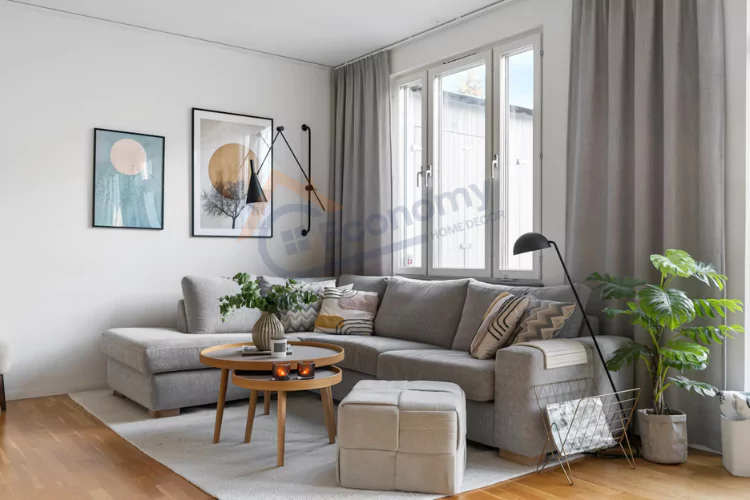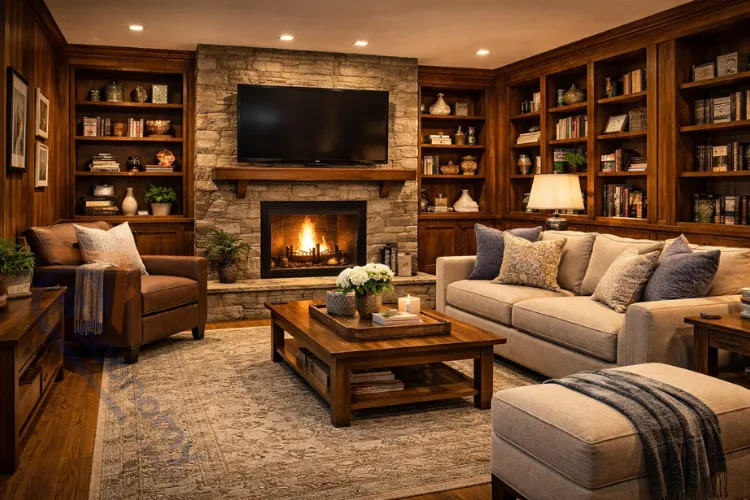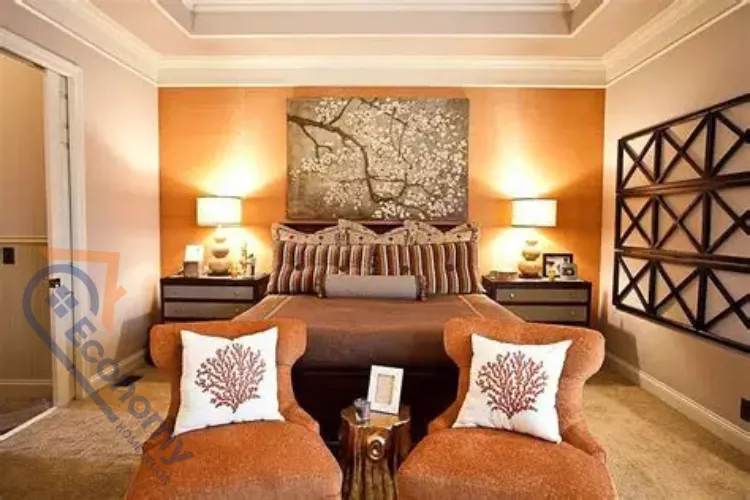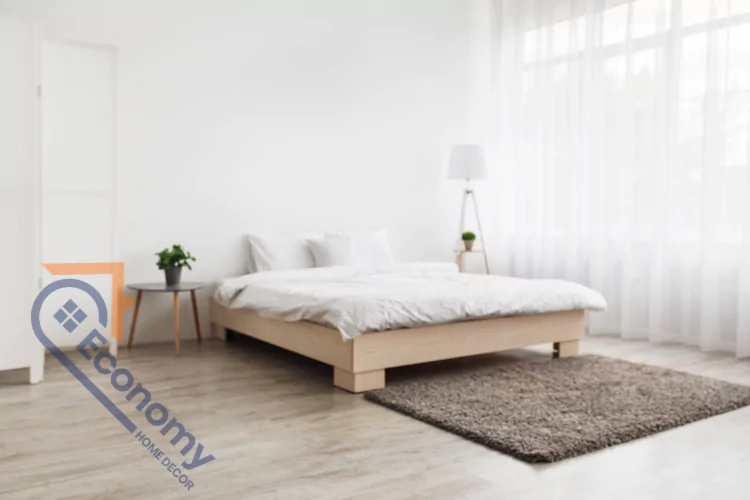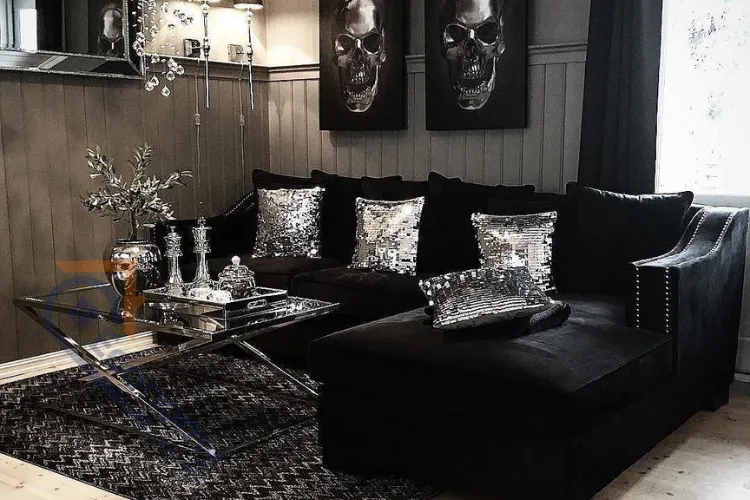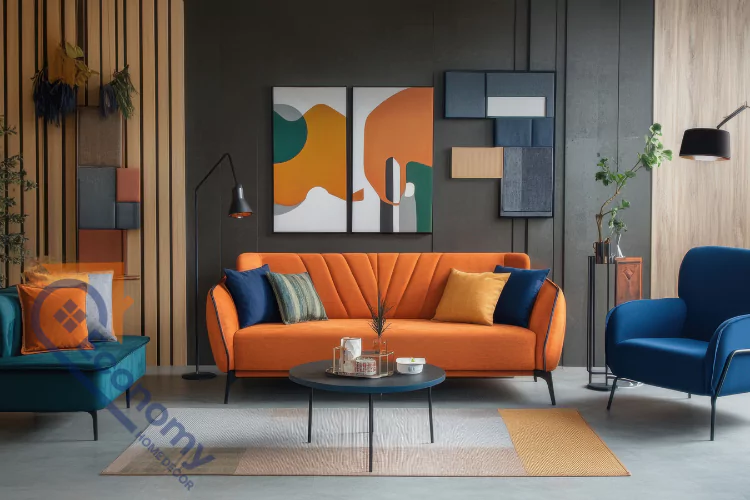Your bedroom should be your personal sanctuary – a place where you can unwind, relax, and recharge after a long day. Creating a comfy bedroom isn’t just about having a good mattress; it’s about designing a space that embraces you with warmth and tranquility. Whether you’re working with a spacious master suite or a compact room, the right combination of colors, textures, lighting, and furniture can transform any space into the ultimate cozy retreat.
In today’s fast-paced world, having a comfortable bedroom has become more important than ever. It’s not just a place to sleep – it’s your personal escape from daily stress. From selecting the perfect bedding to choosing the right color palette, every element plays a crucial role in creating that perfect comfy bedroom atmosphere. The beauty of bedroom design lies in its personal nature; what feels cozy to one person might feel different to another, but there are universal principles that can guide you toward creating your ideal space.
Essential Elements for Maximum Comfort
Creating truly comfy bedroom ideas starts with understanding the fundamental elements that contribute to a restful atmosphere. The foundation of any comfortable bedroom lies in its ability to promote relaxation through thoughtful design choices. Temperature control, proper ventilation, and sound management are often overlooked but crucial factors that significantly impact your comfort level.
Natural light plays a vital role in establishing your bedroom’s ambiance, but equally important is your ability to control it. Blackout curtains or blinds allow you to create the perfect sleeping environment while still letting in morning light when desired. Air quality is another essential factor – consider adding plants that purify the air naturally, such as snake plants or peace lilies, which also contribute to the room’s aesthetic appeal.
The psychological aspect of comfort shouldn’t be underestimated. Personal touches like family photos, meaningful artwork, or collections that bring you joy create an emotional connection to your space. This emotional comfort is just as important as physical comfort in creating a truly restful environment.
Choosing the Perfect Color Palette
The colors you choose for your comfy bedroom decorating ideas can dramatically influence how relaxing your space feels. Warm, muted tones like soft blues, gentle greens, and creamy whites create a calming atmosphere that promotes better sleep. These colors have been scientifically proven to lower heart rate and reduce anxiety, making them ideal choices for bedroom walls.
Neutral colors serve as an excellent foundation because they’re timeless and work well with changing decor trends. Beige, taupe, and soft gray create a sophisticated backdrop that allows you to experiment with accent colors through pillows, artwork, and accessories. For those who prefer more personality in their space, consider incorporating deeper tones like dusty rose, sage green, or warm terracotta as accent walls.
Color psychology plays a significant role in bedroom design. Cool colors like blues and lavenders are known for their calming properties, while warm colors like peach and soft yellow can create a cozy, inviting atmosphere. The key is finding the right balance that reflects your personality while maintaining the peaceful essence essential for quality rest.
| Color Family | Best Bedroom Shades | Psychological Effect | Best Used For |
|---|---|---|---|
| Blues | Powder blue, Navy, Periwinkle | Calming, reduces stress | Main walls, accent pieces |
| Greens | Sage, Mint, Forest | Refreshing, promotes balance | Feature walls, plants |
| Neutrals | Beige, Cream, Soft gray | Versatile, timeless | Base colors, large furniture |
| Warm tones | Dusty rose, Terracotta, Peach | Cozy, inviting | Accent walls, textiles |
Selecting Cozy Bedding and Textiles
Quality bedding is the cornerstone of any comfy cozy bedroom ideas implementation. Investing in high-thread-count sheets made from natural fibers like cotton, linen, or bamboo can significantly improve your sleep quality. These materials are breathable, soft against the skin, and become even more comfortable with each wash. Thread count isn’t everything – the weave and fiber quality matter more for long-term comfort.
Layering different textures creates visual interest and practical comfort options for changing seasons. Start with a fitted sheet and flat sheet, add a lightweight blanket or coverlet, and top with a duvet or comforter. This layering system allows you to adjust your warmth level throughout the year while maintaining a cohesive look.
Throw pillows and decorative cushions add both comfort and style to your bed. Mix different sizes, textures, and patterns while staying within your chosen color palette. A general rule is to use odd numbers of pillows for the most pleasing visual arrangement. Consider incorporating different materials like velvet, linen, faux fur, or knit textures to create depth and interest.
Lighting Solutions for Ambiance
Proper lighting is crucial for creating aesthetic comfy bedroom atmospheres. A well-lit bedroom should have multiple light sources at different levels – ambient, task, and accent lighting. Overhead lighting provides general illumination, but it’s often too harsh for a relaxing bedroom environment. Instead, focus on creating layers of softer lighting options.
Bedside lamps are essential for reading and creating a cozy atmosphere before sleep. Choose lamps with warm-toned bulbs (2700K-3000K color temperature) that emit a soft, yellowish light rather than harsh white light. Table lamps, floor lamps, and wall-mounted sconces all provide excellent bedside lighting options depending on your space and style preferences.
String lights, fairy lights, or LED strips can add a magical, dreamy quality to your bedroom. These accent lights create a soft glow that’s perfect for winding down in the evening. Consider placing them behind your headboard, around windows, or draped along the ceiling for a starry night effect. Candles also provide beautiful ambient lighting, but always prioritize safety with proper holders and never leave them unattended.
Comfortable Seating Areas
Incorporating comfy bedroom chair ideas transforms your bedroom from just a sleeping space into a multifunctional retreat. A comfortable reading chair creates a dedicated space for relaxation, morning coffee, or simply putting on shoes. The key is choosing seating that complements your room’s size and style while providing genuine comfort.
For larger bedrooms, consider a plush armchair with an ottoman or a small loveseat positioned near a window to create a cozy reading nook. Chairs for bedrooms comfy options include wingback chairs for traditional spaces, mid-century modern chairs for contemporary rooms, or even a comfortable chaise lounge for ultimate relaxation. The fabric choice is crucial – opt for soft, durable materials that feel good against the skin.
In smaller spaces, a small comfy couch for bedroom or a compact accent chair can provide seating without overwhelming the room. Look for pieces with storage capabilities, such as ottomans with hidden compartments or benches at the foot of the bed. These dual-purpose pieces maximize functionality while maintaining the room’s comfortable atmosphere.
Storage Solutions That Don’t Compromise Style
Smart storage is essential for maintaining a peaceful, clutter-free environment that supports your comfy bedroom designs. Visual clutter can create mental stress, so having designated places for all your belongings is crucial for true comfort. Built-in wardrobes, under-bed storage, and stylish dressers help keep your space organized while contributing to the overall design aesthetic.
Under-bed storage is often underutilized but offers significant space for seasonal clothing, extra bedding, or rarely used items. Storage boxes, vacuum-sealed bags, or rolling drawers can maximize this space efficiently. For a more permanent solution, consider a platform bed with built-in drawers or hydraulic lift storage that allows easy access to the entire under-bed area.
Decorative storage solutions can enhance your bedroom’s style while serving practical purposes. Beautiful baskets, vintage suitcases, or stylish trunks can store items while adding character to your room. Floating shelves provide display space for books, plants, or decorative objects without taking up floor space, making them perfect for smaller rooms.
Creating Cozy Master Bedroom Retreats
Comfy master bedroom ideas often focus on creating a sophisticated yet relaxing environment that serves as the primary retreat for couples. Master bedrooms typically have more space to work with, allowing for additional furniture pieces and design elements. Consider creating distinct zones within the room – sleeping, seating, and perhaps a workspace or vanity area.
A sitting area in the master bedroom can include two comfortable chairs with a small side table, perfect for morning coffee or evening conversations. This creates an intimate space within the larger room and provides alternatives to always sitting on the bed. Choose furniture that complements your bed’s style and color scheme for a cohesive look throughout the room.
Privacy and luxury elements can elevate a master bedroom from comfortable to extraordinary. Consider adding blackout curtains for better sleep, a ceiling fan for air circulation, or even a small fireplace for ultimate coziness. Personal touches like artwork, family photos, or collections displayed thoughtfully add personality without creating clutter.
Small Space Comfort Maximization
Comfy small bedroom ideas require creative thinking to maximize both space and comfort without compromising on style. The key is choosing furniture and design elements that serve multiple purposes while maintaining the cozy atmosphere you desire. Light colors, strategic mirror placement, and smart furniture choices can make a small bedroom feel more spacious and comfortable.
Vertical space utilization is crucial in small bedrooms. Wall-mounted shelves, floating nightstands, and tall, narrow dressers draw the eye upward and create the illusion of height. Consider a loft bed if ceiling height allows, creating usable space underneath for a desk, seating area, or additional storage.
Multi-functional furniture pieces are invaluable in small bedrooms. Ottoman storage benches, beds with built-in drawers, and nightstands with multiple shelves maximize functionality in limited square footage. Choose pieces that complement each other stylistically to maintain visual cohesion throughout the space.
Guest Bedroom Essentials
Comfy guest bedroom ideas focus on creating a welcoming space that makes visitors feel at home while maintaining practical functionality. Guest bedrooms often serve double duty as office space, storage areas, or multipurpose rooms, so design choices must balance aesthetics with practicality. The goal is creating a space that’s comfortable for occasional use while fitting seamlessly into your home’s overall design.
Quality bedding is non-negotiable in guest rooms – your visitors should have access to comfortable sheets, pillows, and blankets. Consider keeping extra blankets easily accessible, as different people have varying temperature preferences. A luggage rack or bench at the foot of the bed provides a convenient place for guests to place their belongings without cluttering other surfaces.
Thoughtful amenities make guests feel truly welcome. A bedside carafe with glasses, reading materials, extra phone chargers, and good lighting for reading all contribute to a comfortable stay. Consider adding a small basket with travel-sized toiletries, fresh towels, and perhaps some local treats or information about your area.
Flooring and Rug Considerations
The foundation of your bedroom comfort starts with the flooring, and comfy rugs for bedroom spaces can dramatically enhance both comfort and style. Area rugs provide warmth, sound absorption, and softness underfoot, making your bedroom feel more luxurious and comfortable. The right rug can also help define different areas within larger bedrooms or add color and pattern to neutral spaces.
When selecting bedroom rugs, consider both practical and aesthetic factors. Natural fiber rugs like wool or cotton are durable and comfortable, while synthetic options might be more budget-friendly and easier to clean. Size matters significantly – a rug that’s too small can make the room feel disconnected, while the right size can anchor the entire space and make it feel more cohesive.
Rug placement affects both the look and functionality of your bedroom. A large rug that extends under the bed and beyond on all sides creates a luxurious feel and ensures you step onto softness when getting out of bed. Alternatively, smaller rugs on each side of the bed can provide comfort without the expense of a large area rug.
Dark and Moody Bedroom Designs
Cozy comfy dark bedroom designs create intimate, cocoon-like environments perfect for rest and relaxation. Dark colors can make a bedroom feel sophisticated and deeply comforting when executed properly. The key is balancing dark elements with appropriate lighting and texture to avoid creating a space that feels oppressive or gloomy.
Deep, rich colors like navy blue, charcoal gray, or forest green can create stunning accent walls that add drama without overwhelming the space. When using dark colors extensively, incorporate plenty of texture through bedding, curtains, and decorative elements to add visual interest and prevent the space from feeling flat. Metallic accents in gold, brass, or copper add warmth and sophistication to dark color schemes.
Lighting becomes even more critical in dark bedrooms. Multiple light sources at different levels help create ambiance while providing adequate illumination for tasks. Consider adding LED strips behind headboards, table lamps with warm bulbs, and perhaps some candles to create a truly cozy atmosphere that feels intentional rather than dim.
Key Takeaways
Creating the perfect comfy bedroom involves thoughtful consideration of multiple elements working together harmoniously. The most successful comfortable bedrooms balance aesthetic appeal with practical functionality, ensuring the space is both beautiful and livable. Remember that comfort is personal – what feels cozy to one person might not work for another, so trust your instincts while incorporating proven design principles.
Investment in quality basics like bedding, lighting, and seating pays dividends in daily comfort and long-term satisfaction. Don’t feel pressured to complete your bedroom makeover all at once; gradual improvements allow you to live with choices and make adjustments as needed. The goal is creating a space that truly feels like your personal retreat.
Consider your bedroom’s role beyond just sleeping – it might serve as a reading room, meditation space, or simply a quiet retreat from household activity. Design choices should reflect all the ways you use your bedroom to ensure maximum comfort and functionality. Personal touches that reflect your interests and personality make the space truly yours.
Frequently Asked Questions
The most crucial elements include quality bedding, appropriate lighting, comfortable temperature control, and personal touches that make you feel relaxed. Good storage solutions to minimize clutter and comfortable seating options also contribute significantly to overall comfort.
Focus on multi-functional furniture, light colors to maximize the sense of space, strategic mirror placement, and vertical storage solutions. Quality bedding, proper lighting, and personal touches can transform a small space without structural changes.
Warm, muted tones like soft blues, sage greens, creamy whites, and gentle earth tones create the most relaxing environments. Avoid overly bright or stimulating colors in large quantities, though they can work well as accent colors.
Lighting is extremely important for both functionality and ambiance. Multiple light sources at different levels – ambient, task, and accent lighting – allow you to create the perfect atmosphere for different activities and times of day.
Invest in natural fiber sheets with good breathability, such as cotton, linen, or bamboo. Thread count isn’t everything – focus on fiber quality and weave. Layer different weights of blankets and comforters for seasonal adaptability.
Choose a comfortable chair with good back support, ensure adequate lighting with a reading lamp, add a small side table for books and drinks, and position the seating near natural light if possible. A soft throw and cushions enhance the cozy factor.
Start with new pillows and throw pillows, add soft lighting with string lights or candles, introduce plants for better air quality, rearrange furniture for better flow, and add personal touches like photos or artwork you already own.


